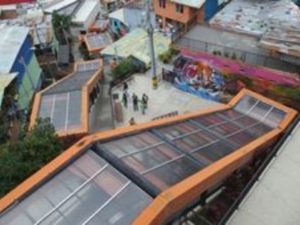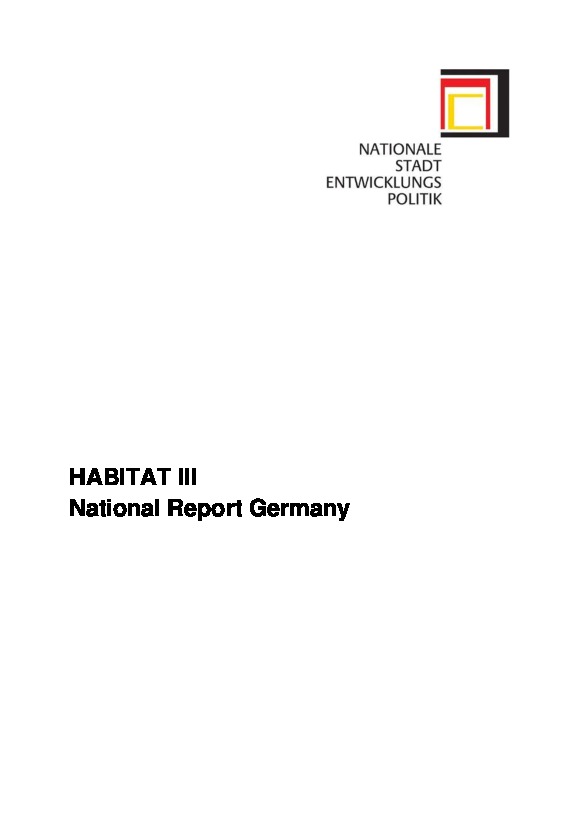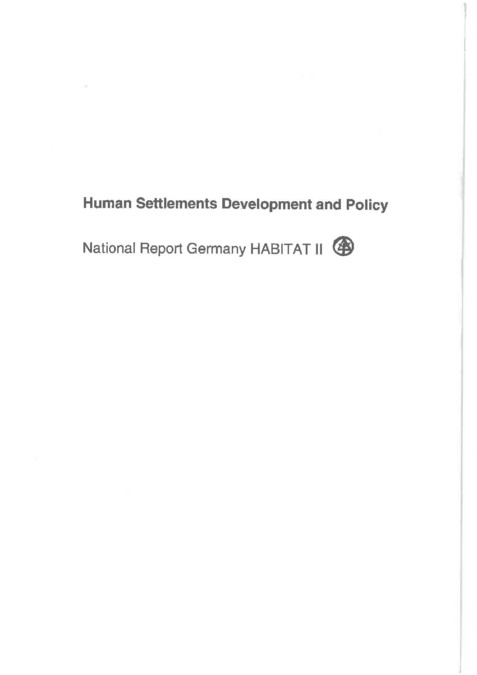

Germany
Urban indicators:
| Value | Year | ||
| Surface area (sq km) | 357340 | 2014 | |
| Population (proj., 000) | 80682 | 2016 | |
| Pop. density (per sq km) | 231.5 | 2016 | |
| Capital city | Berlin | 2015 | |
| Capital city pop. (000) | 3563 | 2015 | |
| Population growth rate (average annual %) | 0.1 | 2010-2015 | |
| Urban population growth rate (average annual %) | 0.2 | 2010-2015 | |
| CO2 emission estimates (000 tons/tons per capita) | 757313/9.4 | 2013 | |
| Population using improved drinking water sources (urban/rural, %) | 100.0/100.0 | 2015 | |
| Population using improved sanitation facilities (urban/rural, %) | 99.3/99.0 | 2015 |
| 1995 | 2005 | 2014/2015 | |
| Urban population ('000) | 60,936 | 61,498 | 62,170 |
| Level of urbanization (%) | 73.3 | 73.4 | 75.3 |
National Report:
National Report Executive Summary:
In 2012 out of the 81 million people living in Germany, about 90% lived in towns and cities (defined by agglomerations of 5000 or more inhabitants). Out of that 90% about two-thirds dwelled in medium-sized towns and cities of 20.000 inhabitants and upwards.
Germany is characterised by a polycentric urban structure. Compared to more centralised states like England or France the capital is not the only urban centre that experiences a significant influx of new inhabitants. Despite the distribution of larger urban agglomerations across the German territory, supra-regional as well as intra-regional differences are visible. The former manifests first and foremost in the divide between a shrinking (and in few parts, stagnating) population in the East compared to a growing (in some parts, stable) population in the West. Even within regions differences between individual towns and cities regarding their growth or shrinking are significant and bring along a vast array of challenges for federal, Länder and municipal governments.
These are exacerbated by current demographic shifts with an ageing population on the one hand and a great influx of migrants and refugees on the other hand. Both large-scale developments pose challenges and bring along opportunities for urban development in Germany.
Statistics:
Urban housing indicators
Urban population with access to adequate housing (%)
Basic services and infrastructure
Urban population with access to safe drinking water (%)
Urban population with access to adequate sanitation (%)
Urban population with access to regular waste collection (%)
Urban population with access to clean domestic energy (%)
Urban population with access to public transport (%)
Level of effective decentralization
Policies and legislation on urban issues that local governments contributed to formulating since 1996 (%)
Share of both income and expenditure allocated to local governments from the national budget (%)
Share of local authorities’ expenditure financed from local revenue (%)
Indicators for urban policies, legislation and economy
Local authorities having implemented urban policies supportive of local economic development and creation of decent jobs and livelihoods (%)
Local authorities having adopted or implemented urban safety and security policies /strategies (%)
Local authorities having implemented plans and designs that are inclusive and respond to urban population growth adequately (%)
Share of national gross domestic product (GDP) that is produced in urban areas
Statements by Germany:
-
Intersessionals: Open-ended Informal Consultative Meetings
Comments on Preparatory Process Documents:
Events:
- At the Habitat III Conference:


Urban Finances

Cities of Tomorrow: Liveable, Mobile and Connected

Housing policy: the comprehensive approach and the importance of security of tenure

How can cities benefit from national urban policies to drive low-carbon and resilient urban development?

Eastern European Urban Transformation
- More events:

Nach Habitat3: Wie geht es weiter mit der New Urban Agenda?

The 3rd Europe Housing Forum, 18-20 November 2015
We express our gratitude to the Government of Germany for their active participation as member of the Bureau of the Preparatory Committee as well as their contribution to the Habitat III Trust Fund, ensuring the innovative nature of the Habitat III Conference. We also thank you for joining the Quito Implementation Plan platform, committing to the implementation of the New Urban Agenda.




